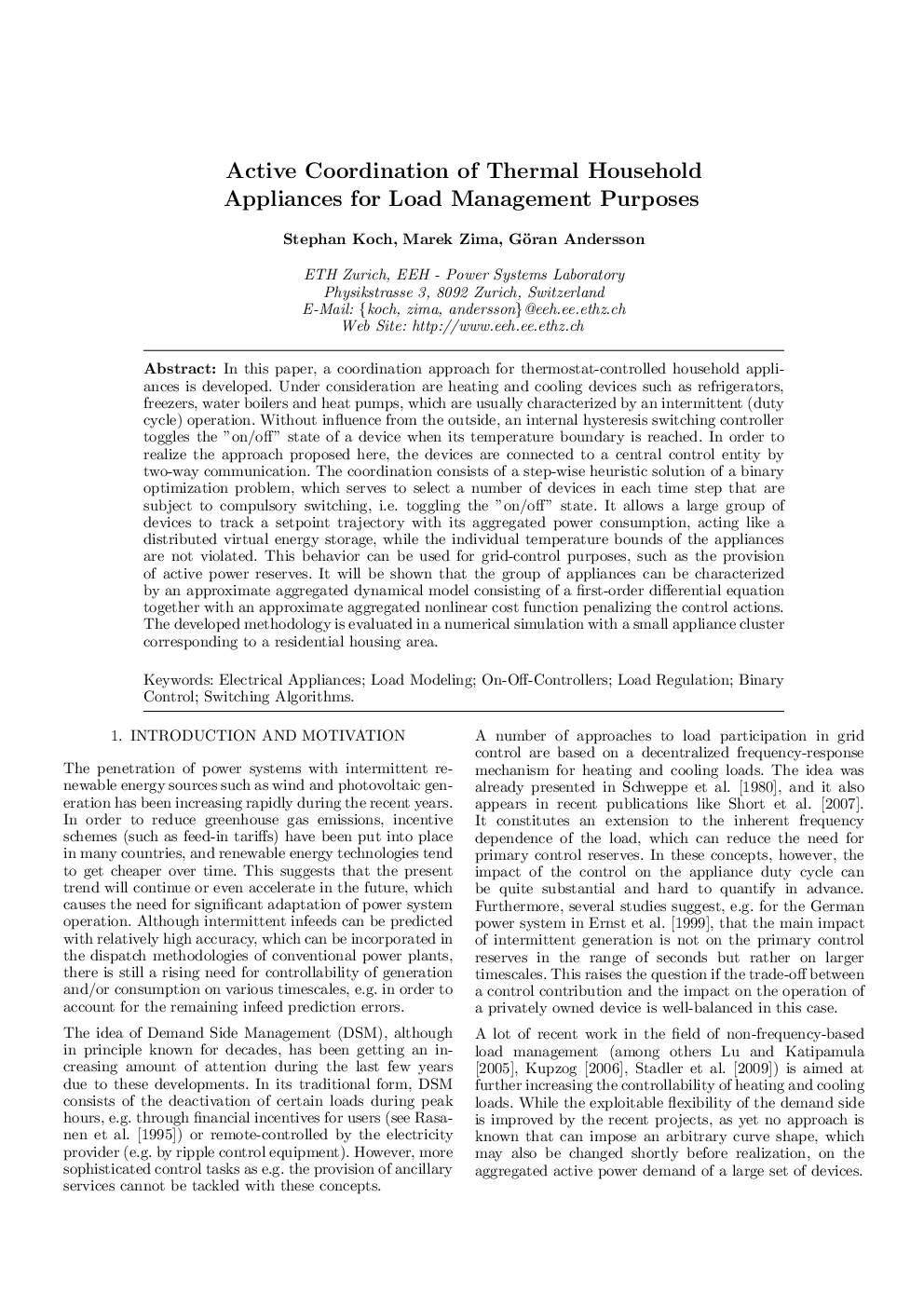| Article ID | Journal | Published Year | Pages | File Type |
|---|---|---|---|---|
| 721251 | IFAC Proceedings Volumes | 2009 | 6 Pages |
In this paper, a coordination approach for thermostat-controlled household appliances is developed. Under consideration are heating and cooling devices such as refrigerators, freezers, water boilers and heat pumps, which are usually characterized by an intermittent (duty cycle) operation. Without influence from the outside, an internal hysteresis switching controller toggles the “on/off” state of a device when its temperature boundary is reached. In order to realize the approach proposed here, the devices are connected to a central control entity by two-way communication. The coordination consists of a step-wise heuristic solution of a binary optimization problem, which serves to select a number of devices in each time step that are subject to compulsory switching, i.e. toggling the “on/off” state. It allows a large group of devices to track a setpoint trajectory with its aggregated power consumption, acting like a distributed virtual energy storage, while the individual temperature bounds of the appliances are not violated. This behavior can be used for grid-control purposes, such as the provision of active power reserves. It will be shown that the group of appliances can be characterized by an approximate aggregated dynamical model consisting of a first-order differential equation together with an approximate aggregated nonlinear cost function penalizing the control actions. The developed methodology is evaluated in a numerical simulation with a small appliance cluster corresponding to a residential housing area.
